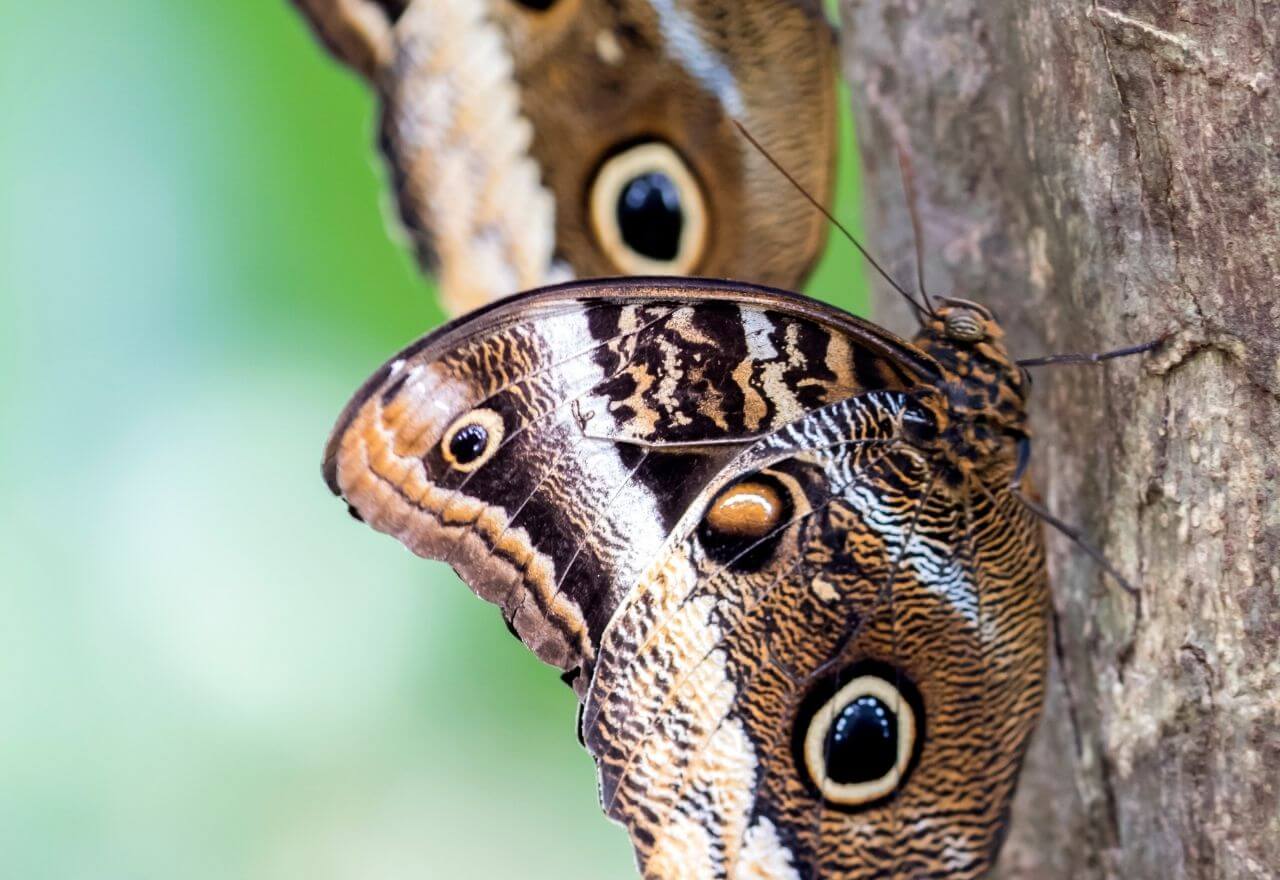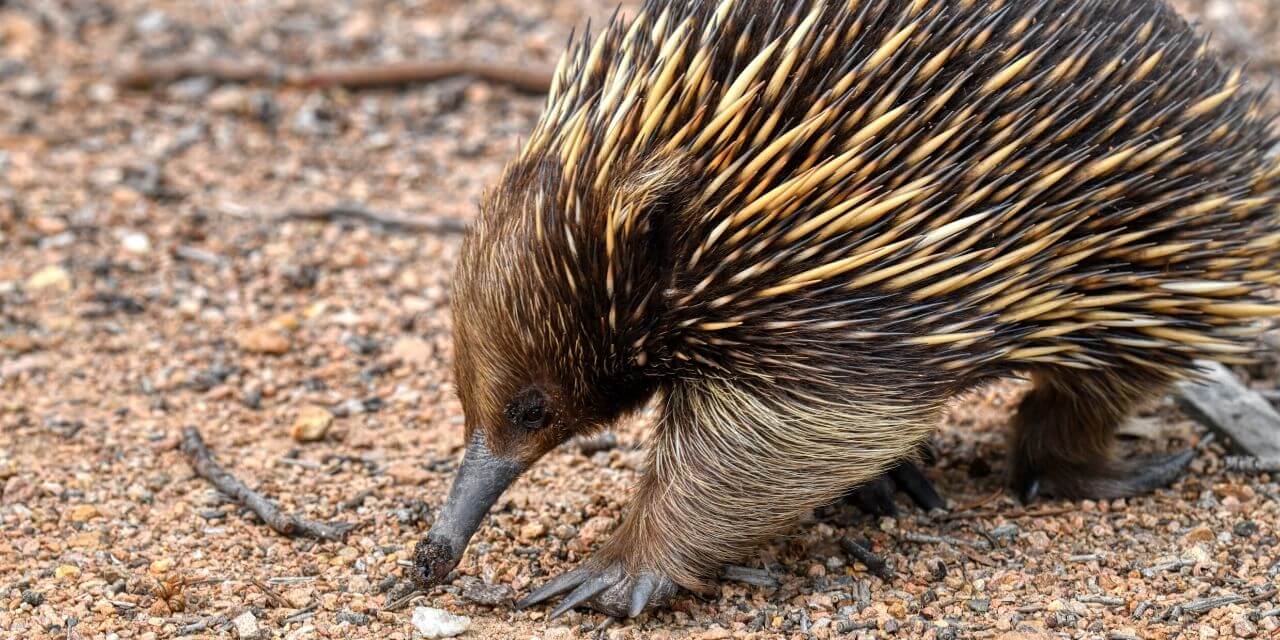Avoiding Predators
Adaptations

How Do Animals Avoid Predators?
Word of the Week
Mimicry
In biology, mimicry occurs when one animal looks like a different organism! This often helps them to avoid predators.
Nonvenomous milk snakes have similar colors to the venomous coral snake. Butterfly fish have large eyespots to look larger and confuse predators. Burrowing owls will even mimic the sound of a rattlesnake's rattle!
Species Spotlight
Owl Butterfly
Caligo ssp.
Owl butterflies, also known as Caligo butterflies, get their name from the huge eyespots on their wings that look like owl eyes! By tricking predators into thinking they are large owls, they often avoid being eaten. Owl butterflies spend lots of time drinking the juices of rotting fruits in the rainforests of Central and South America. They generally look for fruit at dusk when fewer birds are out hunting. Because of their large size (up to 8-inches long), they are poor fliers and can only fly a few feet at a time, making them easy prey!
When it comes to reproduction, males find females by sight and let out pheromones when they are close. If the female accepts the male, they fly together to strengthen their bond. Females lay their eggs on one of their host plants that eventually become food for the caterpillars. One of their host plants is the banana plant, so owl butterflies are often considered a pest on banana plantations!
Conservation Corner
Human-Wildlife Conflict
Grey Wolf
We might think of wolves being undefeatable in their habitats and, while that is almost true, there is one predator that often seeks them out. For centuries, humans have hunted wolves to protect themselves and their livestock, like cows and goats. As ranchers changed wolf habitat into grazing land for cattle, they drove away the wolves' natural prey species, like deer and elk, and the wolves began to prey on the cattle. This upset ranchers and encouraged them to go out and hunt the wolves. Even today, thousands of wolves are hunted to protect livestock or for sport every year. While this may keep cattle safe, it causes serious harm to the ecosystem as a whole. Wolves are a keystone species and play a very important role in keeping their ecosystem balanced. Watch the video below to understand the importance of wolves and learn why they need our protection!
BRAIN BLAST
Human-wildlife conflict is an ongoing issue. Brainstorm a list of ideas that would help ranchers, livestock, and wolves live together in one habitat. Hint: Think of how we could protect livestock from the wolves!
How Animals Avoid Predators
Each of the animals below has a special way that they avoid predators. Match each animal below to the animal that shares a similar predator-avoidance adaptation!
Avoiding Predators Challenge
We have now learned all about the incredible ways animals avoid predators! Most animals use one or two adaptations, but what if there was an animal that used them all?! For this challenge, you are going to design an animal that is an expert at avoiding and fending off predators. Use as many adaptations as you can think of; get creative! Here are some common adaptations to consider...
- Spines
- Venom
- Poison
- Camouflage
- Bright colors
- Mimicry
- Looking larger
- Claws & teeth
- Warning sounds
Glossary
Adaptation
Something an organism has or does that helps them survive in their environment.
Behavioral Adaptation
Things organisms do or ways they act that help them survive.
Camouflage
The ability for an organism to blend into their surroundings usually to hide from prey or predators.
Carnivore
An animal that eats other animals.
Herbivore
An animal that eats mostly plants.
Mimicry
Occurs when two species that are not closely related look similar.
Omnivore
An animal that eats both plants and animals.
Physical Adaptations
Body parts or other physical parts of a plant or animal that help them survive
Poison
A toxin that is eaten or absorbed through the skin.
Predator
An animal that hunts other animals for food.
Prey
An animal that is hunted and eaten by another animal.
Shelter
A protected space where animals will go when there is danger or to raising offspring.
Venom
A toxin that is injected with teeth or a stinger!
Sign Up for our Newsletter
Stay up to date with new adventures, live classes, deals, and more!

Helpful Resources
*Please note we do not offer refunds for EdZOOcating Adventures memberships. We recommend you explore the 3-day free trial prior to subscribing!*




